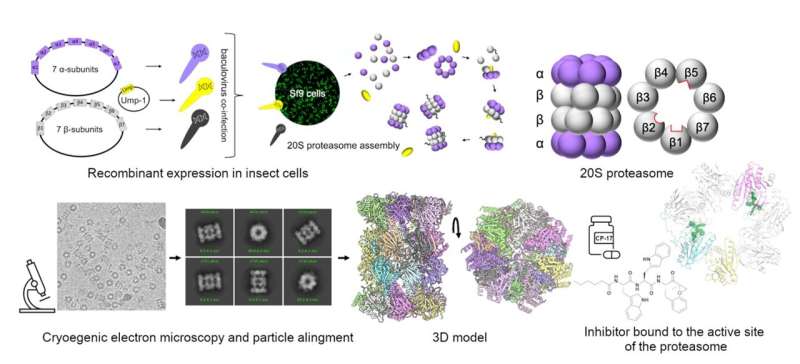Researchers from IOCB Prague have made a breakthrough in the understanding of how medicines work, with a focus on the sexually transmitted infection trichomoniasis. By creating an artificial proteasome, a key enzyme complex, they have gained crucial insights that could pave the way for new and more effective treatments. This research, published in Nature Communications, holds promise for combating the rising issue of drug-resistant strains of the Trichomonas vaginalis parasite.

Secrets of the Proteasome Revealed
The proteasome is a large enzyme complex that breaks down old proteins in cells, a mechanism key for their recycling. If this process is inactivated, old proteins collect up and destroy the cell. In fact, certain types of cancer have been treated by blocking proteasome activity. In this study, the authors of IOCB Prague predicted that trichomoniasis, a highly prevalent STI associated with an increased risk of acquiring HIV, could be similarly addressed by the same approach.
But a proteasome of the parasite Trichomonas vaginalis had never been convincingly isolated, which had complicated the task enormously. The best way to get around this issue was for the team of researchers to produce a proteasome that they constructed artificially and was identical to the natural one. For the first time, they were able to get a detailed look at the parasite’s proteasome using cutting-edge electron microscopy, so they could actually visualize nearly every atom.
The Hidden Life of Parasite Proteasomes —open-access explainer
Being able to describe the structure of the parasite’s proteasome, which was previously unknown, is important because those insights “open new possibilities for designing drugs” against any organism with a similarly structured proteasome, said Kazuya Shimoda at Heidelberg University in Germany. And as Dr. Evžen Bouřa says: “Each animal or even protozoan has a proteasome, which forms the same cylindrical body in all cases; however, the exact shape of that structure varies.” These are the kinds of details we need to know in order to develop a drug that is toxic for the parasite but not harmful for humans.” This knowledge is a necessary prerequisite for drug development since it will enable the researchers to find substances that can block effectively the proteasome function in the Trichomonas vaginalis cells but not in the human host.
Armed with this information, the researchers then treated cells with two putative proteasome inhibitors. They watched the way in which these materials grip onto the active site of the proteasome — and when the proteasome ceases to work, ensuring that the parasite cell expires as a result.
Novel trichomoniasis therapeutics
This work, conducted by a team at IOCB Prague in collaboration with colleagues from University of California San Diego, is an important contribution to the field of understanding and treating trichomoniasis. The need for fusion inhibitors is even more urgent now that drug-resistant strains of theT. vaginalis parasite have appeared[2].
The researchers have now developed an artificial proteasome and deciphered its structure, setting the stage for discovering new chemical compounds that will specifically bind to the parasite’s proteasome thereby inhibiting its action while leaving human cells unscathed. This information may be important for the discovery of new and more efficacious therapies to treat trichomoniasis, with implications for public health by lowering the risk of HIV infection. We continue to look forward as research goes on, and hope for the best in further developments.
